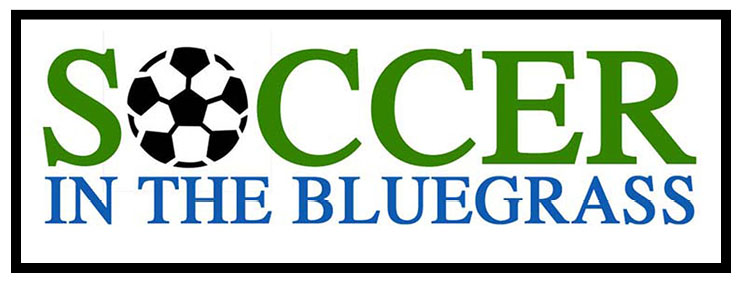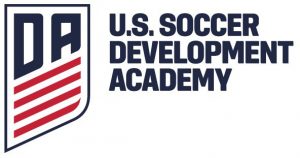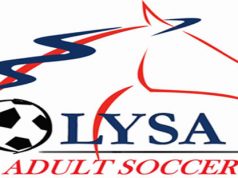Since the United States men’s national team was eliminated from World Cup contention in October, many fans have turned to the U.S. Soccer Federation for answers. What do they plan to do to ensure that this does not happen again?

Soccer in the Bluegrass reached out to Tim Turney, a former Kentucky Youth Soccer Association president and current Vice President of U.S. Youth Soccer, who is helping lead a number of new initiatives to move U.S. Soccer forward.
“Our job is to put kids on the field, and help them learn the game, get healthy, and have fun.”
Turney got his start in Woodford County Youth Soccer and continues to live in Versailles. As a U.S. Soccer board member, he has been part of a number of changes in the last couple of years to bring fun back into the game while at the same time enhancing player skill levels.
“We’re really talking about entry level into soccer. So anything from three to four years old,” Turney said. “What is it that we have to do as a Youth Association to get them interested in the game? Some of the things we’re doing is we’re looking at partnering with school districts to get soccer a little more as part of the physical education program, even if that means bringing in some of our coaches.”
In addition, U.S. Youth has worked with Tom Byers, author of Soccer Starts at Home, and partnered with a group called Soccer Shots, which targets three to five year olds.
“What they do is basically give them a ball and teach them basic motor skills. Hand to eye, eye to foot coordination,” Turney said. “They’re not playing soccer as you would typically call the game but they’re getting familiar with the ball.”
To further support player development, U.S. Soccer is looking to create after-school programs. In places such as Chicago, New York, and Boston, there are many basketball courts in the inner cities – some of which are in disrepair. The U.S. Soccer Foundation is planning to rebuild some of these courts into dual-purpose soccer courts to encourage kids to go out and play.
But their focus hasn’t only been on the young players. U.S. Soccer has established a list of criteria for its Development Academies to adhere to in order to gain its financial support.
Development Academy clubs, located around the country, including a boys and girls academy in the Cincinnati area, offers high-level training and games intended to put U.S. players in the most competitive environment available. While these D.A.’s have largely been seen as a positive step, their restrictions on not allowing players to play for their high school teams have cost them some kids and clubs.
Turney believes that restrictions on high school play, while controversial, are in the best interest of the athletes.
“It’s probably not healthy for a player to participate on two teams at the same time. They’re training three to four days a week (per team),” Turney said. “That’s a player safety issue, and the D.A., through their player initiatives, are very concerned about player safety.”
Nevertheless, Turney considers high school to be a vital part of player development for those not in the academy setting.
“I think high school sports play a very valuable role. It creates fans. It creates awareness of the game. It’s a tremendous boost to your self-esteem and your growth as an individual,” he said. “There’s nothing better than playing on a high school team and walking into school the next day after you’ve won a game. Or lost a game! And people give condolences, congratulations. That’s an emotional thing and that’s a social thing that I think is very important.”
Originally from St. Louis, Turney played soccer in school and in clubs before moving to Versailles in 1982, where he continued his involvement through coaching and refereeing. This led to him working with and eventually becoming president for both the Woodford Youth Soccer Association and the Kentucky Youth Soccer Association. During that time, Turney helped run regional events as well as the National ODP Tournament for U.S. Youth Soccer. He became Vice President for U.S. Youth in 2015.
Having done his share of coaching, Turney knows the importance of ensuring that young players are trained by professionals.
“You want somebody that is a teacher, not just a soccer player because it’s a different skillset. So right now (the federation has) redone a lot of their coaching courses,” Turney said of U.S. Soccer’s new Grassroots Coaching Pathway, unveiled earlier this year. “So, basically teach-the-teacher, coach-the-coach, is another initiative that’s coming out.”
While these new initiatives are promising, Turney predicts that there may be struggles that go along with implementing these changes, because of the complicated nature of the U.S. system.
“The structure is what gets in the way because we trip over ourselves all the time. Because you have a local club, (which is) a member of Kentucky Youth Soccer. Kentucky Youth Soccer is a member of the U.S. Youth Soccer, and then they are a member of the federation. So the child that’s playing (on the local club) is directly connected to the federation,” Turney said. “But how much input does the federation have directly on that child? If I, sitting as a member of U.S. Youth, tell Kentucky Youth Soccer, ‘We’ve done the research. This is the best way to train your kids.’ Now they’re going to pass it down to all of the different clubs within Kentucky. Some will say yes, some will say no. So it’s very hard to get a consistent message all the way through.”
One of the ways U.S. Soccer plans to work around these struggles is to streamline the system.
“Part of it is setting standards. Does your club or team meet this standard? If everything works, then you’re going to be given a rating. So a parent can go on the website and say, ‘Show me all of the clubs within 40 miles that have a 5-star rating,’ Or whatever terminology (the federation plans) to use. And let’s say five of them have that, and five of them don’t. Why do these five not? Well, they don’t do background checks on all of their volunteers, they don’t have a certain level coaching director, they don’t participate in our Safe Child program. These are all things you would have to do to get (a higher) rating. So (the federation is) looking at ways to do that in a fair, equitable way.”
One of these standards, which was fully implemented across the U.S. last year, is requiring organizations under U.S. Youth to change the start date of their developmental cycle from August or September 1 (essentially U.S. “grade levels”) to January 1. (calendar year levels). This has received some backlash from individual associations because it devastated some local clubs’ ability to field teams in every age group.
“(There was a) lot of uproar because we’d always done it this way. That was done for developmental and cognitive reasons. At some point you have to set a date, because, say they held a child back two years. Rules are there to keep things equal. It’s a management tool, that’s all.”
While Turney sees the benefit of changing the year cycle in terms of competitive soccer, he thinks that these guidelines are not as important on a recreational level.
“If you play in one of our tournaments, yes we check everything. But at this age we’re talking about little kids playing recreational soccer to have fun,” Turney said. “The most important thing is to put them on the field and have fun. Nobody from the federation, from Kentucky Youth Soccer, is going to come down and say, “That child can’t play here because he’s three days too old.”
The World Cup loss in October was certainly devastating, but it did open a discussion about the changes that need to be made in how soccer is played in America. While there may not be any quick, easy solutions, U.S. Youth Soccer intends to rebuild and improve many facets from the ground up. Ultimately, Turney believes that the most important thing to cultivate is the love of the game.
“From the youth side, our job is to create an environment where children want to play the game, and they’re comfortable. Those that have the ability and the commitment and determination and want to move on, they can do that, and we provide those pathways,” Turney said. “But the rest is a game that everybody can play, have fun, and become fans. That’s where the majority of the people are. So when the national teams play, you know enough about the game, and you enjoy it, that you’ll go watch. So by doing that, we’re creating fans. Part of the federation’s motto is to ‘serve the athletes, serve the fans.’ You do them kind of at the same time. One fuels the other.
“You do the best thing for the child, then you do the best thing for the game, and everything else works out.”









